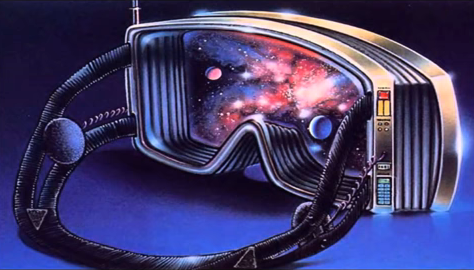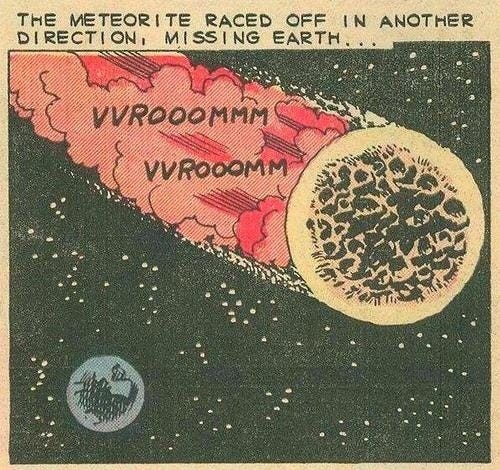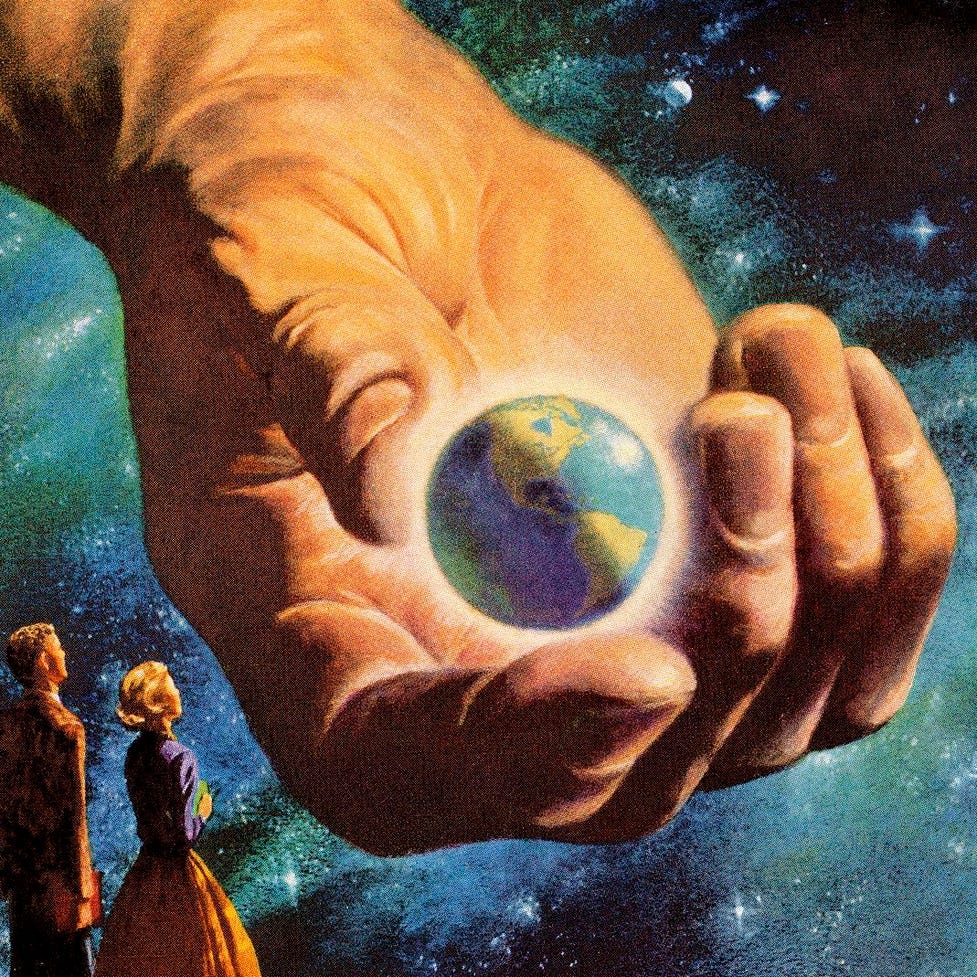I often wonder if the majority of us choose to believe in life on other worlds because of scientific reasons, or sentimental ones. There are, of course, plenty of encouraging numbers about the many Earth-like exoplanets and the many radiating stars around which habitats might form. The odds seem to be in the favor of extraterrestrial life. But then there is the reality of things: the silence, the lack of any evidence that anyone out there is listening at all. How much of our belief in alien life stems from data, and how much of it stems from a desire not to be alone? Certainly humans are social, bonded creatures — some more than others. If we do not like to feel alone on a personal level, then perhaps we so cherish the idea of alien life because we do not like to feel alone on a species-wide level.
We are so like a man on an island, huddled around a fire at night and with no one to whom to speak. It is easy to see how a person like that might start to wish for company. And he knows, too, that this company may not always be good — it may be dangerous and sharp-toothed and unsympathetic — but both to quell his curiosity and to quell his loneliness it is a chance he is willing to take.
Today I’ve decided to explore some of the most memorable explanations to the absence of alien life, or as it’s more formally known “The Fermi Paradox”. The list is not meant to be exhaustive but it does aim to provide both familiar and refreshing new ideas. Some are reasonable, some outlandish, some morbid and difficult to accept. At the end I will leave you with my own personal belief.

- Galactic colonization is not similar to humans exploring the globe and eventually colonizing all the continents. Instead think of galactic expansion as if an aquatic species is spreading out through Earth’s bodies of water. They are only interested in very specific environments for living. Similarly, alien life will not be interested in the sun or our Solar System. An advanced enough civilization may be interested in gathering energy directly from a host star, as with a Dyson sphere. Stars of spectral class O could be 800,000 times more luminous than the sun, allowing them to harvest 10¹⁸ times more energy than we could ever harvest here on Earth. Aliens in this scenario only colonize places with high energy potential such as black holes and powerful stars.
- We live in a simulation. In this “Planetarium Scenario” the universe outside of Earth has been simulated and does not contain actual worlds capable of developing life. We are the only real beings in a universe that’s painfully false.

3. The “Zoo Scenario” is based on mankind’s approach to the natural world. Extraterrestrial civilizations have chosen to avoid contact with Earth because we represent nascent, primitive life in what is the universal equivalent of a wildlife preserve. Along that vein we…
4. represent a valuable resource. At a certain point in an alien civilization’s development they may have moved beyond the need for planet-dwelling. Earth and its physical resources are no longer as important to aliens as the resource humans themselves can provide: information. If alien civilizations choose to leave all life-bearing planets untouched they will merely have to avoid an estimated .6% of all stars. They will then be able to observe, study, and gather information from these developing life-bearing worlds.
5. There is a relatively popular belief among the public that we have already had alien visitors and they helped to construct monuments such as Stonehenge, lines in the Nazca Plain, and the pyramids of Egypt. They may have also left behind technology to help mankind’s advancement.

6. On the other hand they may have visited Earth but all traces of their visit were erased by the planet’s active plate-tectonics, glaciation, and natural weather events. There is, however, some evidence which would have survived and remained detectable. This includes radioactive particles with half-lives spanning millions of years and intense quarrying which would have left deep indentations in the Earth’s surface similar to indentations left by meteor impacts. There is also the possibility that alien life did not visit Earth but instead some other world in our Solar System. People already scour images of Mars and the moon for evidence of alien structures and signs of ancient life. Asteroids themselves may have started out as larger collections of matter that were fragmented over the years as aliens undertook mining projects. Alien craft still present would not be easily distinguishable from natural asteroids so long as the craft were a maximum of 1 km in size.
7. And perhaps among the most outlandish propositions is that aliens visited and never left. They disguise themselves as humans — especially humans of power like politicians and talented celebrities. This is part of a larger scheme to keep close watch and influence on human life.
8. Returning to the more scientific theories, what if interstellar travel is simply impossible? The distance between stars is enormous and building craft capable of going anywhere near the speed of light can prove to be beyond anyone’s technological capabilities. But if some very clever civilization had managed to build space-sailing vehicles,
9. they may not have had enough time to reach us yet. Even traveling at 100% lightspeed the closest star system is over 4 years away, meaning that visitors from another galaxy could take millions and billions of years to travel from their star system to ours. A trip from the closest galaxy to the Milky Way would take 2.5 million years. This is, again, assuming that their craft is capable of traveling at the full speed of light and not just at some percentage of it. For reference even our fastest spacecraft can’t reach 1% the speed of light. Nevermind the fact that our laws of physics tell us nothing with mass can travel at 100% lightspeed.

10. We are the aliens. Life may have originated on another planet and over the years transported itself to Earth. This is perhaps most plausible if we assume life began on Mars. Over the years Mars and Earth have exchanged large amounts of matter as impacts and meteorites travel from one planet to the other. If Mars began with very Earth-like, watery conditions then life may have begun there but flourished when it arrived on Earth, imbedding itself on this planet and developing under Earth’s more stable conditions. Meanwhile traces of life on Mars would have disappeared as the planet became dry and inhospitable. This is the panspermia theory and, though it works best with Mars, life could have originated on some distant world and been brought here either by natural or artificial means.
11. Aliens exist but they are in another universe. This scenario assumes the multiverse theory is true and multiple universes exist. Aliens may either have evolved in this universe and found a way to enter other parallel universes or they developed in the parallel universe and have no way of knowing or contacting us from across the void.
12. All technologically advanced civilizations eventually succumb to their own creations. This can happen either through something as explosive as a nuclear war or through something more intellectually sinister and conniving, such as artificial intelligence that gets out of control.

13. A civilization’s extinction might also have come from natural events: meteor impacts, gamma-ray bursts, natural disasters, epidemics.
14. UFOs are not manmade after all and they really are the result of alien activity. Anywhere from 30–50% of Americans believe UFOs are real and can be best explained by the existence of extraterrestrials.
15. Aliens do not wish to communicate because they do not share our desire to explore the universe nor do they care for the existence of other civilizations. Or they may not reach out because…
16. they have created virtual realities for themselves which are more interesting and fulfilling than anything in the real world.

17. Aliens are sending signals in a way which we do not recognize. Up until now we assumed their signals would come in the form of electromagnetic radiation because of its various advantages. Not only is it cheap and easy to produce, it would also move at the speed of light and could be received by more primitive civilizations. Our focus on this kind of radiation could mean we’re missing signals elsewhere.
18. Or that we’re not listening at the right frequency. We monitor the region of the radio band between 1.42 and 1.64 GHz the closest because it seems the most logical part of the spectrum with which to communicate. But it could be that aliens are broadcasting at another frequency. In order to receive their signal we will have to be pointed to the right part of the sky at just the right time and at just the right frequency. Even if we do receive a signal it could be lost in the mountains of data collected by projects like SETI.

19. We may be one of the only — if not the only — civilizations broadcasting our existence. Others could adhere to the premise of the “Dark Forest Theory” of the universe in which civilizations choose to remain silent for fear of being attacked. When there is no way for you to know another person’s intentions, it’s best to play it safe.
20. Civilizations on other worlds may not be able to develop astronomy at all. Physical characteristics of their planet may make it impossible for them to study or explore the universe. Their skies may be perpetually dark, clouded, or otherwise perpetually bright so that the population does not even dream of other worlds.
21. In the “Rare Earth Hypothesis” we explore the idea that there were many fortunate events leading to the formation of life on Earth. Not only Earth’s placement in the Solar System and in the galaxy, but also its unique geothermal activity, its accompanying moon, our rare and stable star, and our proximity to a planet the size of Jupiter to protect us from accidental impacts. So many factors contributed to our existence, in fact, that it is unlikely life has developed on other worlds. And if life does exist on other worlds,
22. it does not easily develop into complex and intelligent organisms. This may be because some step in our evolution is incredibly difficult to overcome. It may be something miraculous like the prokaryote−eukaryote transition or the development of intelligence at the human level. Neither are toolmaking or technological advancements guaranteed.

23. An alien civilization’s population may grow so rapidly and consume so many resources that they reach environmental over-saturation. At this point there are not enough resources to meet the demands of the population and it collapses to the point where it is no longer able to reestablish itself.
24. More advanced civilizations have reached the technological singularity and are now beyond our understanding. They may even gravitate towards places of great power and mystery, such as the inside of a black hole.
25. Intelligence is not permanent. As a species’s environment changes they may find that intelligence is no longer useful for their survival. They will therefor revert back to a more simple mind. Life sheds intelligence though it continues to thrive.
26. God exists and created the universe solely for the human race. Alternatively, aliens are gods and they created us, just in the way that we fantasize about someday creating a universe in a lab. In this scenario some message could one day be passed from their universe into our daughter one.
27. Aliens transition into a postbiological era where they no longer feel common biological needs such as the ones to reproduce, self-preserve, or even expand and colonize new worlds.
28. They are already in our Solar System but they have sent small, hidden probes which we cannot detect because they are programmed to remain invisible to our technology. These probes may be found at places such as a Lagrange point which helps craft maintain stable orbits while reducing their need for fuel.
29. Alien life does not exist and will not ever exist.

And, finally, my own personal belief. This idea extends beyond mankind’s solitary status in the universe and applies to each one of us at the individual level. That we must learn, at least for some time, to be alone. We are one of the first living organisms to arrive in the universe. Over the years more instances of life in all its dizzying variety will crop up across the sundry worlds of this cosmic cradle. What seems silent and empty now will someday be filled with the boisterous streams of radiation indicating busy civilizations at work.
It’s difficult to think that, for now, we’re still alone. But each human is born and dies alone; this is not so different. If we are the first civilization to arise then we can use this time to evolve into the best kind of beings: wise, welcoming, looking to guide and not destroy. Let us use these formidable years alone to become the very things we keep wishing to find.
“You’re an interesting species. An interesting mix. You’re capable of such beautiful dreams, and such horrible nightmares. You feel so lost, so cut off, so alone. Only you’re not. See, in all our searching the only thing we’ve found that makes the emptiness bearable, is each other.” From the novel Contact by Carl Sagan.





























